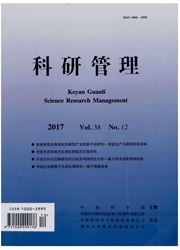

 中文摘要:
中文摘要:
首先,根据我国工业化与信息化的实际情况,本文对工业化与信息化融合度和工业化与信息化融合效率进行了定义;其次,在协同度评价模型的基础上构建了工业化与信息化融合度的评价模型,并对我国2003年到2010年工业化与信息化融合度进行了评价;再次,在工业化与信息化融合效率定义的基础上,从投入产出角度构建了全要素融合效率评价指标,并运用仁慈型DEA交叉效率评价模型对我国1997年到2010年工业化与信息化融合效率进行了评价。结果表明:从2003年到2010年,中国工业化与信息化的融合度越来越高,但是融合效率却越来越低,融合“大而不强,多而不精”的现象十分明显。最后根据分析结果,得到相应结论,为我国工业化与信息化融合发展提供决策上的参考。
 英文摘要:
英文摘要:
Firstly, the definition of integration degree between industrialization and informatization and the definition of integra- tion efficiency between industrialization and informatization are proposed according to the real situation in China. Secondly, an e- valuation model for the integration degree between industrialization and informatization is constructed; based on synergy degree e- valuation model, the integration degree in China during the period of 2003 -2010 is evaluated. Thirdly, according to the defini- tion of integration efficiency between industrialization and informatization, a total factor evaluation index system for integration ef- ficiency is established from the aspects of input and output, and a benevolent Data Envelopment Analysis (DEA) model is used to evaluate the integration efficiency between industrialization and informatization in China during the period of 1997 -2010. The results show that the integration degree has been increased, however the integration efficiency has been decreased, and the phe- nomenon that the integration is "big but not strong, more many but not better" is prominent. Finally, some decision - making suggestions for China on the integration development between industrialization and informatization are proposed.
 同期刊论文项目
同期刊论文项目
 同项目期刊论文
同项目期刊论文
 期刊信息
期刊信息
